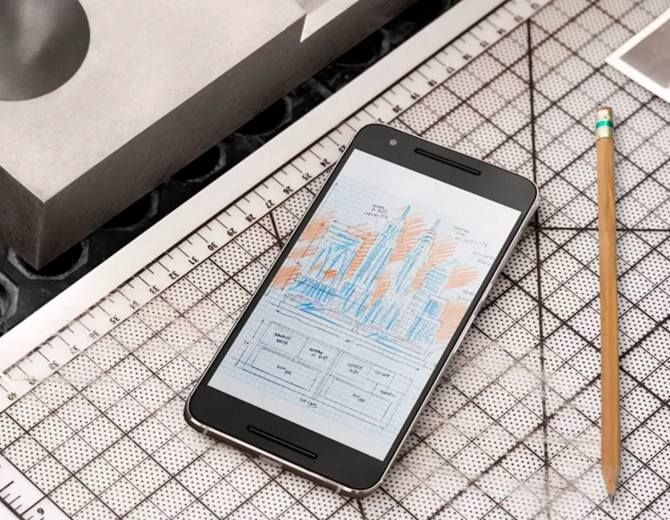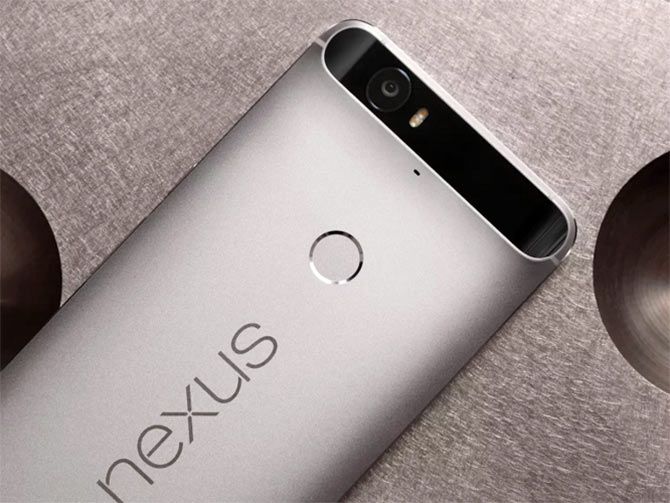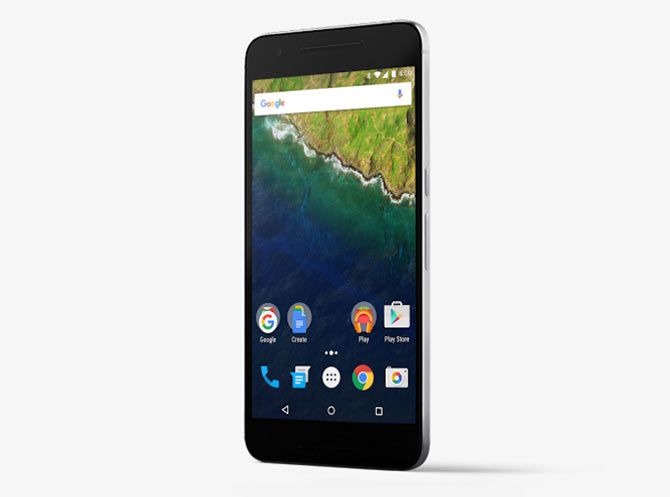How capable is the latest mobile phone from the Nexus bloodline? Himanshu Juneja reviews the Nexus 6P.
The new age of Google's Nexus mobile phones is upon us, and this time round there is a special treat for the fans. Breaking the tradition, Google released two different Nexus brand mobile phones.
While LG Nexus 5X sticks to the core values, it is the Huawei manufactured Nexus 6P which has stolen the limelight. Not only the phone oozes quality and style, it has the desired hardware inside as well. With a point and shoot class sensor, the Nexus 6P comes fully loaded to take the competition head on.
The all-metal Nexus 6P already threatens to lure the prospective buyers with premium looks, the combination of a buttery smooth OS experience, and capable hardware makes it a powerful player. We attempt to find out how capable is the latest mobile phone from the Nexus bloodline.
Design

The Nexus 6P is a unibody, all-metal affair. The construction material used is aeronautical grade aluminum, and along with chamfered edges, which shimmers every now and then, makes up for a pretty good looking exterior. The all metal body is not finger print magnet, but it does collect few over a period of time.
Learning from the debacle of Nexus 6, the latest Nexus mobile has not only reduced it's width, but thoughtful construction sees the phone carrying curved corners and manageable heft as well. The weight has been reduced too, and all this leads to acquiring a comfortable grip on the device.
Turning the phone around, one finds the two striking features which are worth mentioning. The fingerprint scanner which is placed carefully to allow users for easy unlocking alternative and assist while paying for merchandises, and the 'Visor' which many were wary of.
The Visor, a clear inspiration from ZTE Athena, houses the camera module, the laser guided focus system and the LED flash. This portion looks massive due to the large camera sensor, but it doesn't make the phone wobble when placed on a flat surface.
As for the keys, the right side of the phone carries the power and the volume keys. The left side plays host to the SIM tray, and the top portion witnesses the 3.5 mm audio jack. USB type C port is situated at the bottom.
The placement of the power and volume keys caused some discomfort. One has to alter the grip in order to access them. Thankfully, the finger print scanner comes to the rescue and unlocking the phone at the least is not a tedious task.
Reports of knock on code like feature showing up in future is promising.
Display
The Nexus 6P comes with an AMOLED touchscreen panel worth 5.7-inch in size.
As expected, the phone comes with a Quad HD screen and carries a resolution of 1440 x 2560 pixels. This results in a cracking pixel density of about 518 ppi.
As for the performance, the display is pretty much fabulous. The colours came out to be saturated, and looked every bit a part of a flagship device. The viewing angles too are impressive. The outdoor reading experience was pretty good as well, although the brightness levels could have been a bit more. Text looks crisp and dense.
The phone also provides an sRGB mode if you don't like the saturated colours, and thankfully, the output doesn't lose its production values either.
One complain here would be the ambient display. Google hasn't perfected it as good as the Moto Display. The screen on the Nexus 6P seemed stubborn to get activated as soon as the phone detected a movement.
Hardware
The phone is carrying a redesigned Snapdragon 810 chipset. The Octa core set up comprises of Cortex A53 Quad-core processor, clocked at 1.55 GHz and another Cortex A57 Quad-core chugging at 2.0 GHz.
Adreno 430 GPU helps around with the smooth graphics flow on the device. 3 GB of RAM sounds perfectly alright for the flagship phone.
As is expected, there is no option to expand the storage memory. One gets to choose from either 32 or 64 GB worth of inbuilt storage capacity which should prove good for most users.
Connectivity
A single SIM device, the Nexus 6P comes with 4G compatibility. Other features show up as well, like Bluetooth (4.2), WiFi (dual band), WiFi direct and NFC.
While Radio misses the cut, AGPS and GLONASS are present to guide the users around.
Operating system

It is no secret that the Nexus devices are pretty much the showcase for untouched Android OS. Pure, unaltered OS experience is what a Nexus device boasts of, and this time it is Android (ver 6.0) Marshmallow's turn.
While the earlier version (Lollipop) highlighted the material design approach, the latest version not only retains that, but makes the overall OS much more leaner and manageable. Marshmallow achieves this by allowing the user to even uninstall Google's own apps.
The ones which cannot be uninstalled are in fact the essential bits of software which makes a phone what it is, like the Dialer, Messenger, Calculator, Clock, Calendar, Camera, Settings etc. Google has gone ahead and tried to make the users feel more in control.
Another step towards offering control is the app permissions department. Now the user explicitly can refuse the apps to take a blanket nod to everything it wishes for.
For example, in order to share a pic via WhatsApp, the app now will prompt in real time, just prior to activating the camera if this permission hasn't been granted at installation.
This is going to go a long way in setting a benchmark for how Android OS is shaping up in this department.
The native support for finger print scanner is another worthy addition, which not only means that the scanners will work better, they are expected to be popping up on many more devices as a result. Android Pay surely is licking its lips at the moment.
Elsewhere little tweaks have found a home. Volume controls, clear prompts while selecting texts, addition of a dark mode, and the Google Now on Tap. The latter still needs refinement and surely google could have avoided this record of half baked feature being passed around. It is good, but not fully 'automagical' yet.
What is definitely great is the Doze mode, which dramatically enhances the battery back up.
Performance

Performance wise, the phone zips across the tasks, with no lag to be found anywhere. Be it launching of apps, or switching between them. Be it playing HD movies or intensive gaming experience with the latest HD games. The transition effects were smooth as expected, and the multitasking experience played out nicely as well.
The phone got fairly warm with CPU intensive tasks, but never become a cause for concern.
A special mention of the dual speakers at the front. These are not at the same level as HTC's BoomSound perfection, but are quite good and capable in their own right. Gaming and movie watching experience especially becomes quite immersive.
The fingerprint scanner is responsive and unlocks the device in a jiffy. The complain here would be that it is a bit too sensitive and will even consider an accidental brush of hand on the scanner as an unlock attempt, while the user only wanted to retrieve something like a set of keys from the same pocket as of the phone.
Google may want to address this in the next update.
But overall speaking, a much satisfied user at the end of the day.
Camera

The Nexus 6P comes with a 12.3 MP rear camera. The most important feature to note here is that it comes with a 1.55 µm sensor from Sony, which was basically meant for point and shoot cameras. The large sensor hence is capable of capturing more light, and performance during poorly lit conditions too is supposed to be better.
While the claims of improved low light photography falls flat on its face, the pictures from dimly lit conditions were not downright awful. It is just that they never touch the levels Nexus 6P claimed to.
With the bad out of the way, here is the good part -- the Nexus 6P camera is right up there with the best. It is certainly not class leading, but something which will hold on to its own in the competition, and certainly the best on a Nexus device yet. That being said, the missing optical image stabilisation is nothing short of harakiri for a flagship model.
A double tap of the power button pops open the camera app for quick access. The photographs came out with great amount of details and the colours looked natural and pictures come out vivid. The camera on the Nexus 6P seems to have solved the long pending complain of having to bear with an okayish camera.
The HDR mode is present, but is not in the same league as that of Samsung or an LG.
Having said that, it does come to the aid of users when the issue of metering crops up, and renders the overall photograph in a much more pleasant and palatable version. It will be safe to say that even with non-class leading camera, the results furnished easily hold onto their own and will not let the users down.
What really is an eyesore is the dated camera app. Straightaway one notices the lack of editing options. the other useful features are still embedded deep inside the settings which really prove to be annoying. To complete the list, the black bars appearing on the viewfinder immediately prove to be of supreme annoyance.
It will be best if the users download a third party app.
On the videos front, the camera is capable of capturing crisp and vivid looking 4k videos. There is the option to choose from 1080p slow motion videos at 150 fps or 240 fps to keep the users busy. Results were again satisfactory.
The front camera is an 8 MP unit, and provides some of the cleanest and impressive results from among the flagships.
Battery
While the Nexus range is expected to come with a non-removable battery, the absence of wireless charging is the real dampener here. With Nexus 6P especially being Google's premium edition, leaving out the feature truly bothers.
Nonetheless, the n 3450 mAh battery comes with support for fast charging. Two hours was all that it took for the phone to get juiced up. The inclusion of USB type C helps, but the cable clings onto the charging port a bit too dearly. It takes some effort to disengage the connector and this should have been looked into.
Performance wise, there should hardly be any complaints. A full day's usage with heavy usage pattern witnessed the phone ending up with around 15 per cent charge still left at night time.
Bendgate
There are reports and videos floating on the Internet about the phone's vulnerability to bend. While the claim is indeed true, it is important to mention that the phone bends only when extreme force is applied.
It will easily withstand day to day and normal usage generally witnessed.
Verdict

This device right here is definitely the most polished of the Nexus phones yet. It took Google to partner with Huawei to bring out the magical device which is ticking the correct boxes all around. The Nexus 6P delights on most of the fronts.
There are some quirks here and there. The missing OIS and failure to include wireless charging in a flagship being the most prominent ones. Camera is very very impressive, and so is the fingerprint scanner, but both need to be fine tuned a bit to match the highest of the industry standards.
OS-wise, Google Now on Tap misfires at times, but none of these are really a deal breaker.
With no more subsidising policy, the phone is priced at Rs 39,999 for the 32 GB variant and Rs 42,999 for the 64 GB variant. Coming in classy looking Silver and Grey make, users can definitely expect an absolute treat with the purchase of a Nexus 6P.










